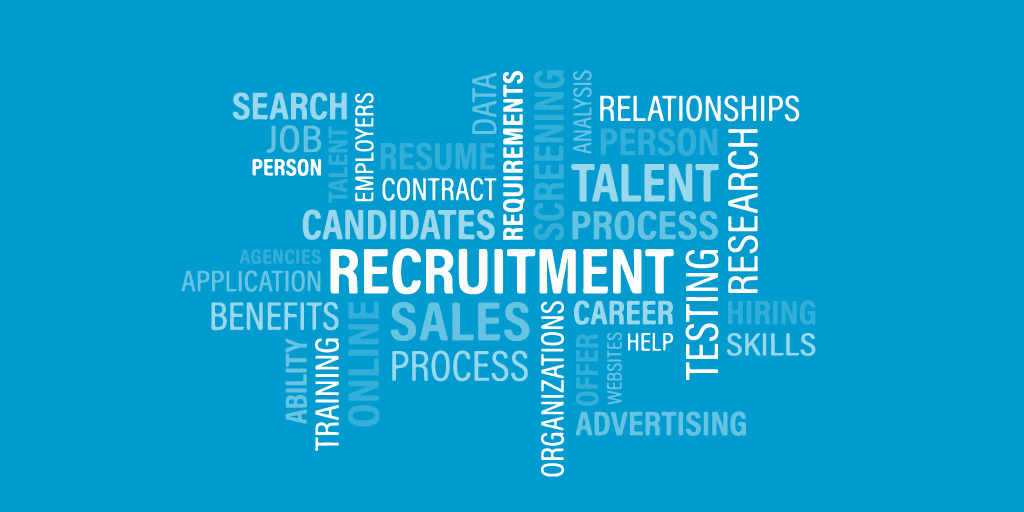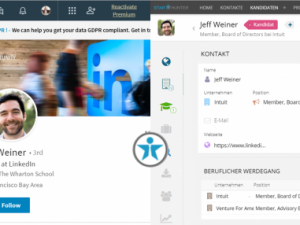
With 2017 about to come to a close, now is a great time to familiarise yourself with the recruitment trends you can expect to see in 2018. Next year is going to be full of changes in the industry, particularly with digital recruitment becoming more prevalent than ever before. Some of these changes will call for a new approach to recruitment strategies while others will require a complete overhaul of the daily tasks carried out by recruitment staff.
In 2018, recruitment consultants need to step away from outdated approaches and time-wasting systems. There’s more competition than ever for the most sought-after talent and, to get your hands on them, you need to be up to speed.
So, if you want to stay ahead of your competitors and find the best talent in 2018, try implementing some of these tips into your new year recruitment strategy.
The Recruitment Trends of 2018 that you need to know!
More Focus on the Candidate Experience
As the competition for talent rises, it’s vital for employers to ensure that they offer a positive and pleasant candidate experience.
While traditionally, recruiters placed most of their efforts on finding talent and choosing from the best of them, these days the tables are turning. Candidates have a lot more control in the recruitment process and it’s now more important than ever for companies to prove their own worth by offering outstanding candidate experiences.
A weak application experience can completely tarnish all the work that a recruiter has done to scout out talent. It’s even been reported that 60 percent of job seekers abandon applications due to their dissatisfaction with the process.
In turn, this also has the potential to spoil an employer’s brand reputation. The job application is a candidate’s first point of contact with their potential new employer. If the initial impression isn’t good enough, an in-demand candidate isn’t going to accept a job, no matter how great the salary or benefits package is. As well as this, it’s very probable that they’ll tell their friends and family about their bad experience, too.
Companies looking to provide a better candidate experience should be aware of the factors that make the job application more pleasant. These could include a clear application timeline and more thorough job descriptions.
With job seekers being the heart of the recruitment process, recruitment consultants need to place more importance on how they can improve the candidate experience.
Stronger Use of Social Technology
Ever since its advent, Linkedin has changed the face of professional networking. No longer do workers need to wait until annual conferences to network with the figureheads of their industry. They can do it with the click of a button from the comfort of their work desk. The very same thing can be said for recruitment, too.
Nowadays, instead of looking through newspapers and going from one recruitment website to the next, job seekers can enjoy the ease of using Linkedin to conduct their job search. There are now half a billion users on Linkedin, many of whom use it primarily as a job search engine.
For recruiters, this is a huge pool of candidates to have at their fingertips, so it’s no wonder that 93% scout talent from Linkedin. This figure is only set to rise in 2018’s increasingly tech-savvy work-sphere.
As well as Linkedin, recruiters should also pay attention to how they can elevate their brand identity using other social media platforms like Twitter, Instagram and Facebook.
A Faster Hiring Process
In order to successfully retain the most talented job candidates, it’s important to have a fast and efficient hiring process. The highest skilled candidates in the job market are often so sought-after that they are hired in a matter of days. By prolonging the hiring process, it’s possible that the candidate will receive a better offer from a competing recruiter. Not only could this result in losing the candidate, but it could also result in a bidding war which will in turn lead to higher salary costs.
Having a shorter recruitment process will not only help hiring managers find and retain talent, but it will also save them time as well.
Traditionally, it was believed that a prolonged hiring process was essential in order to find the top talent. Hiring managers would make candidates go through several interview and testing stages to be sure that they were 100% the best fit. This was not only time intensive for the recruiters but also impacted candidate’s moral; especially those who weren’t successful in their job search.
It turns out, though, that a faster hiring process is much more beneficial all round. By using smarter strategies to seek out the best candidates in the first place, there’s no need to have them jump through so many hoops. Not only does this save time and money, it offers a much more pleasant candidate experience, too.
Focus on Employee Wellbeing Perks
Job seeker’s priorities are changing, and salary alone isn’t enough to attract them to a job. These days, people are seeking out opportunities that offer them the chance to craft their ideal lifestyle, too. It’s important then, that employers are offering wellbeing perks that speak to what candidates want.
In this digital era of freelance employees making money from home, one of the main attractions of an office-based job is the wellbeing perks that go along with it. While working from home offers the ultimate work/life balance, many freelance workers miss the security of having benefits like pension packages and paid maternity leave.
To attract the best talent to you workforce, therefore, it’s important to have a competitive employee wellbeing package.
Workplaces are getting more and more creative with what they put in their packages these days. Of course, healthcare packages and reduced childcare are still some of the top priorities that candidates look for. However, benefits like Friday afternoon cocktail mixers and week-long self-care holidays are becoming more and more popular, too.
Not only do perks like this help attract clients, they also help retain them and build a strong employer reputation.
As a recruiter, it’s important to know what employee wellbeing perks are in demand, both in your own geographical area, and among different demographics of candidates, too. In 2018, this should be a prime focus in your search and retainment of the best talent.
Predictive Recruitment Analysis
In the world of automation, predictive analysis is helping recruitment companies save time and money in their talent searches. These clever systems remove the need for painstaking mindless admin tasks to be carried out by hiring managers. Ideal reports that hiring departments can save 23 hours by using predictive analysis which equates to 57% of the recruitment process time.
Predictive analysis uses advanced algorithms and data collection to sort through CVs and job application forms to find the best matches for certain jobs. It can also advise recruiters on how to optimise their job postings, where and how to scout talent and which geographical locations are the best for recruitment campaigns.
Overall, predictive analysis can perform a lot of functions that will help a recruitment consultancy firm improve their search strategy.
For firms that want to save time and staff costs in 2018, while also staying ahead of competitors in sourcing the best talent, it’s time to pay attention to predictive recruitment analysis.
Diversity Hiring
2018 is just around the corner but we’re still a long way away from having fully diverse workplaces. I think you’ll agree that it’s about time for diverse hiring to not just be a recruitment trend, but the absolute norm! This needs to be the year that recruiters strive to make diverse recruitment a priority.
Not only is having diverse and equal workplaces the morally right thing to do, it’s also smart from a business perspective, too. Inclusive workplaces result in happier and more committed staff who are more likely to stay in their jobs for longer.
When many people think about diverse workplaces, they automatically think that gender, race and ethnicity should come first. However, it’s also important to ensure that your workplace has people from a diverse range of socio-economic backgrounds, ages, abilities and with differing educational achievements.
In order to broaden your candidate pool, it’s important to write job descriptions that appeal to everyone. Certain language is said to speak to some groups of people more than others and you should always take this into consideration. For example, phrases like “Rockstar” and “ninja” are said to appeal to men more than women. As well as this, companies should ensure that they have a well-publicised diversity policy and that they’re posting job vacancies in a variety of different places.
With the spotlight going to be shone on diversity more than ever in 2018, there’s no better time for companies to get on board.

Remote Workforces
Remote working is set to be a huge trend for 2018, with both start-ups and large established companies seeing the benefits of having a remote workforce.
Not only are businesses who hire remotely enjoying lower overheads, but they also have access to a larger pool of global candidates for their vacancies. Plus, since remote workers enjoy a greater work/life balance, they’re much less likely to leave their position, allowing businesses to save on further recruitment costs, too.
Some companies are choosing to go fully remote while others have a hybrid workforce with a mix of both remote and office-based workers.
The “digital nomad” lifestyle is becoming increasingly popular among young millennials and the workforce is changing accordingly. It’s important for recruiters to be able to understand this segment of the candidate market. They need to know what their job expectations are and how to assist clients in meeting their employment needs.
Most importantly of all, though, they need to implement an effective recruiting strategy specifically for remote workers. They should know how to market jobs to candidates from all over the globe and be skilled at using virtual recruiting technology.
Gig Economy
The “gig economy” was one of the biggest buzzwords of 2017 and it’s set to have a huge impact on the recruitment sphere in 2018.
More and more freelancers are on the market these days looking to fill short-term vacancies and enjoy more job flexibility. Much like with remote workers, recruiters need to learn how to speak to this type of job candidate and understand the nature of their work.
A lot of the jobs these candidates do are “on-demand” and, in some cases, can help a business fill their casual labour needs without bringing in another permanent member of staff.
Recruiters need to know how to find and acquire these types of candidates. The recruitment process needs to be much shorter since it’s not worth a freelancer’s time to fill out a lengthy job application for a short-term job. It’s also important to have a good knowledge of where to find the best talent. The usual go-to places for permanent job-seekers don’t always cater well to casual freelance workers so recruiters need to be creative in their candidate search.
As well as this, since most gig economy workers are heavy social media users, recruiters and companies should be proactive in ensuring that they’re presenting their brand in the best way possible on these platforms.
What will your Recruitment Strategy be in 2018?
It’s easy to see, then, that 2018 is not going to be a year for complacency.
A good recruitment strategy in 2018 needs to be highly focussed on digital technology as well as being candidate centric. Even techniques that worked for you as recently as in 2015 need an update in these days of change.
To ensure that your recruitment consultancy is at the top of its game and consistently acquires the best talent out there, it’s vital to pay attention to these upcoming recruitment trends.
So, before the bells chime in and the year is up, leave us a comment and let us know, what will your recruitment strategy be in 2018?
 +49 89 4161 5691 0
+49 89 4161 5691 0



